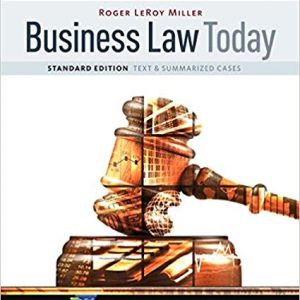No products in the cart.
BUSINESS
 Loading...
.
Loading...
.
Business Ethics A Textbook with Cases, 9th Edition William H. Shaw Test Bank
Business Ethics A Textbook with Cases, 9th Edition William H. Shaw Test Bank
Business Ethics
( Test Bank)
Business Ethics A Textbook with Cases, 9th Edition William H. Shaw Test Bank
Edition: 9thEdition
Author Name:William H. Shaw
contact:
Whatsapp +1 (949) 734-4773
for the Facebook page click here
for more books for ( Test Bank and Solution Manual) click here
For a Instructor Manual click here
sample free
 Loading...
Loading...
$39.00 $50.00
Business Ethics A Textbook with Cases, 9th Edition William H. Shaw Test Bank
Business Ethics
( Test Bank)
Business Ethics A Textbook with Cases, 9th Edition William H. Shaw Test Bank
Edition: 9thEdition
Author Name:William H. Shaw
contact:
Whatsapp +1 (949) 734-4773
for the Facebook page click here
for more books for ( Test Bank and Solution Manual) click here
For a Instructor Manual click here
sample free .
Chapter 1: Electrocardiography
Learning Outcomes
Describe the history and importance of the ECG.
Identify the uses of an ECG and opportunities for an electrocardiographer.
Troubleshoot legal, ethical, patient education, and communication issues related to the ECG.
Perform safety and infection control measures required for the ECG.
Compare basic vital sign measurements related to the ECG.
Extended Outline
I. The ECG and Its History (LO 1.1)
II. Uses of an ECG (LO 1.2)
In the Hospital (Acute Care)
Doctor’s Offices and Ambulatory Care Clinics
Outside of a Healthcare Facility
Defibrillators
Automatic External Defibrillators
Telemedicine
Opportunities in Electrocardiography
III. Preparing for an ECG (LO 1.3)
Legal and Ethical Issues
Protecting Patient Information: HIPAA
Practicing Ethics
Professional Liability
Slander and Libel
Documentation
Consent
Patient Education and Communication
IV. Safety and Infection Control (LO 1.4)
Safety
Infection Control
V. Vital Signs (LO 1.5)
A. Pulse and Respiration
B. Blood Pressure
C. Measuring Blood Pressure
Teaching Strategies
Focus
Introduce students to “Electrocardiography” using the following techniques:
1. Have students discuss why they are taking the program and why they think ECG will be necessary for their career objective.
2. Have students visit a clinic, hospital, or outpatient area to discuss with healthcare professionals how ECGs are utilized in their area.
3. Present a variety of equipment that has changed over the last 10 years, such as defibrillators and pacemakers. With the presentation, have students discuss how technology advancements have changed the practice. Examples may include: technology of mobile phones have allowed ECGs to be electronically transmitted to a physician’s computer/phone from the back of an ambulance.
4. Encourage students to discuss their personal stories about how heart disease has affected them, their family, or someone they know. With this discussion, identify the risk factors for heart disease and stroke and ways to prevent them. Suggest identifying differences due to gender or cultural background and how to prevent heart diseases.
5. Have students identify different locations where AEDs (automatic external defibrillators) are used.
6. Relate the importance of and responsibility for performing accurate diagnostic tests. Suggest that students personalize the concept by stressing that they would expect accurate test results for themselves, a friend, or a significant other.
7. Have students compare and contrast the roles of various healthcare professionals with regard to EGCs.
8. Have students discuss the purpose of ECGs, including common pathology for this test.
9. Emphasize the importance of safety and infection control through hand hygiene, precautions, proper body mechanics, and use of personal protective equipment.
10. Discuss the necessity of being cognizant of legal and ethical issues, including HIPAA, practicing ethics, liability, slander, obtaining consent, and accurate documentation in the medical record.
Strategies
Encourage students to complete the Checkpoint Questions throughout the chapter and check their answers. You can remove the answers from the back of the book and use the Checkpoint Questions as a graded assignment. They can also work on Checkpoint Questions in small groups for reporting out or group discussion.
Have students working on Troubleshooting sections in groups and report the responses out to the class for discussion.
Provide scenarios for students to role play in a variety of situations, such as obtaining consent, communicating appropriately with patients and other healthcare professionals, and documentation.
Facilitate group discussions in class on various topics, such as legal and ethical considerations, the role of EGCs in healthcare, the importance of HIPAA, maintaining safety and preventing the transmission of infection during ECG testing, troubleshooting, the relevance and purpose of vital signs, and communication with patients.
Use the PowerPoint® presentation for Chapter 1 for a class lecture and/or review. Use the Test Your Knowledge questions for discussion.
Have students complete and check the chapter review in preparation for the final chapter evaluation.
Have students complete Connect and LearnSmart assignments. These can be assigned as practice opportunities or graded work for submission.
Assess
Using the test bank for Chapter 1, create a written test in two versions for a final evaluation of student proficiency.
Have students complete LearnSmart and Connect activities, as assigned.
Create a Chapter 1 test or quiz in Connect to evaluate student proficiency.
Have students write and submit a reflection of key concepts for Chapter 1. Submission can also be via an uploaded assignment through Connect.
Chapter 1: Electrocardiography
Answer Key
Checkpoint Questions/Troubleshooting
LO 1.1
Checkpoint Question
Cardiovascular disease
Dr. Augustus D. Waller
Troubleshooting: Remain Calm
1. Say: “The physician would like me to do a recording of your heart.” Do not show signs of fear or anxiety. Remain calm during the procedure.
LO 1.2
Checkpoint Question
Sudden cardiac arrest and serious dysrhythmias (abnormal heart rhythms).
Records the ECG tracing, determines if the ECG tracing is accurate and without abnormalities caused by interference during the recording procedure, and prepares the tracing for the physician’s interpretation.
Troubleshooting: Obtaining Consent
1. A family member, legal representative, or witness, but the patient should write an X if possible.
LO 1.3
Checkpoint Question
Answers will vary; an example is provided here.
Step 1: Identify and define the problem: You have been assigned to perform an ECG, and the patient refuses.
Step 2: Identify possible solutions.
Do not perform the ECG.
Insist that the patient allow you to perform the ECG.
Report the patient to your supervisor.
Question the patient as to why she does not want the ECCG and attempt to gain her cooperation.
Step 3: Select the best solution: d. Question the patient as to why she does not want the ECG and attempt to remove her objection.
Step 4: Implement the selected solution: You question the patient, and she feels uncomfortable about lying exposed on the table during the procedure. You tell her you will cover her and maintain her privacy to the best of your ability.
Step 5: Evaluate the results: The patient allows you to perform the ECG, so the problem is solved.
Step 6: There is no need to return to step 2 because the problem is solved.
LO 1.4
Checkpoint Question
Follow standard precautions and, when necessary, the appropriate isolation precautions.
LO 1.5
Checkpoint Question
Pulse, respirations, and blood pressure.
Palpated blood pressure is performed by placing the fingers on the pulse point while deflating the blood pressure cuff. This technique provides an approximation of the systolic blood pressure. Auscultated blood pressure is determined using a stethoscope and provides a more accurate systolic and diastolic blood pressure reading.
Chapter Review
Matching
f (LO 1.1)
b (LO 1.1)
d (LO 1.1)
h (LO 1.4)
a (LO 1.1)
g (LO 1.2)
e (LO 1.2)
c (LO 1.4)
True/False
(LO 1.1) False; an ECG machine does not produce electricity; it only records the electrical activity of the heart.
(LO 1.4) True.
(LO 1.3) False; slander is the act of making derogatory remarks about someone.
(LO 1.2) False; digital monitoring transmits an ECG over the Internet. (OR: A transtelephonic monitor transmits an ECG over the telephone.)
Multiple Choice
c (LO 1.5)
c (LO 1.1)
a (LO 1.2)
d (LO 1.2)
a (LO 1.2)
b (LO 1.2)
b (LO 1.2)
d (LO 1.5)
b (LO 1.3)
a (LO 1.2)
d (LO 1.3)
d (LO 1.5)
b (LO 1.4)
c (LO 1.3)
c (LO 1.5)
a (LO 1.5)
b (LO 1.5)
d (LO 1.5)
Critical Thinking Application: What Should You Do?
(LO 1.3) Your favorite uncle should have an ECG as part of a routine physical since he is over 40; however, the physician should order this. You should not perform an ECG on someone without a verbal or written order from an authorized healthcare provider. You may, however, practice an ECG on someone, as long as the individual understands you are not going to interpret it or use it for diagnosis.
(LO 1.3) “Mr. Smith, I am not trained to interpret the results of your ECG. As soon as the physician sees it, I am sure he or she will discuss the results with you. How are you feeling right now? Are you having any discomfort or pain? How would you rate your pain on a scale of 1-10, with 0 being no pain and 10 being the most pain?”
(LO 1.3) Every patient has the right to privacy. Your co-worker may have just forgotten to close the door and /or drape the patient. You could quietly close the door or curtain in order to provide for privacy. It would be best not to make any statement or comment to your co-worker at this time unless he or she asks.
(LO 1.3) You should tell your supervisor how you feel and explain the need to go to the restroom. Do not leave the monitors unattended except for extreme or severe circumstances. You should find someone to view the monitors when you are not there. You have a legal and ethical responsibility to ensure that someone is watching the monitors when you are not there. Hopefully, your supervisor will be able to find someone to take your place in order for you to go home.







There are no reviews yet.